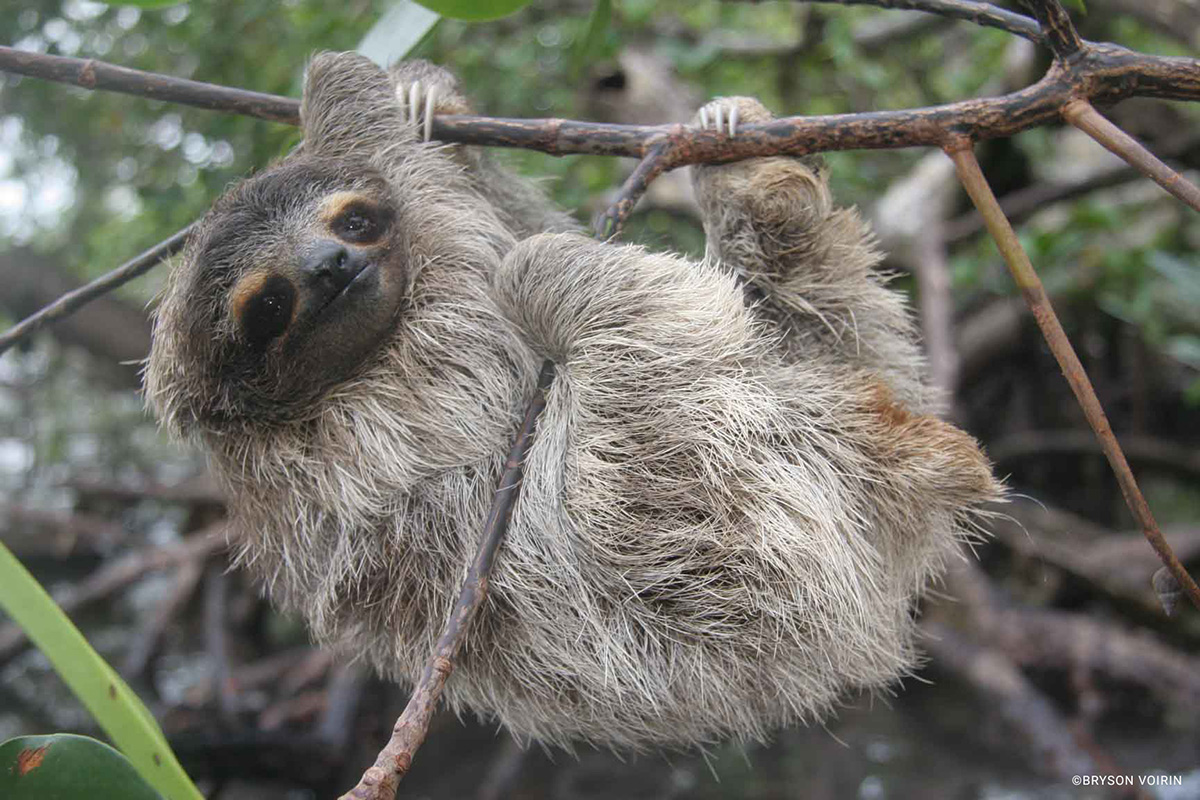In honor of International Sloth Day I’ve decided to talk about, well, sloths!
More specifically the pygmy three-toed sloth. Because if you ever have a choice of pygmy, you should take it.

In general, sloths are classified into two main types: two-toed and three-toed. Pygmy three toed-sloths share that category with mane , pale-throated, and brown-throated sloths. Very descriptive names. While they may look more like monkeys, they are actually most closely related to armadillos and anteaters. Pygmy three-toed sloths grow to about 5-7 lbs in weight and about 20 inches long.
As everyone knows, sloths move slowly. They live in trees and for the most part stay there usually moving only about 40 yards a day. However, if threatened they can actually move pretty quick but it seriously depletes their system. They have an incredibly low metabolism that is the reason for their low body temperature of below 90F and slow movement. Oddly enough, they are pretty quick swimmers and sometimes drop from the trees directly into the water and can cover significantly more area. Pygmy sloths have a multi-chambered stomach that can also assist floating.

Sloths are in the most danger when on the ground. They do not move well there. Luckily, they don’t have to go down all that often, only leaving the trees to urinate and defecate and they only need to do that about once a week. I don’t think I’d want to be present for that weekly appointment.
As sloths spend most of their time hanging upside-down, their internal organs are actually arranged to handle this and not get squished, which is another reason why they don’t do well on the ground. So they are made to be upside down instead of right side up. Silly sloths.
One of my favorite things about them is that their thick fur grows it’s own algae in a (thought to be) symbiotic relationship. Look at that green fuzz. (Note: that is not a pygmy, but you get the point)

Now, sloths live in the tropical rain forests of Central and South America. However, pygmy three-toed sloths only live on a small island off the coat of Panama: La Isla Escudo de Veraguas, It is uninhabited, but has seasonal inhabitants that sometimes hunt the sloths and the island mangroves are also logged. Loss of habitat is the main contributor to the status of Critically Endangered for these sweet, slow animals. It is estimated that there are less that 50 pygmy sloths left in the wild.
If you’d like to do something for these gentle creatures, here are a couple of sites where you can learn more:
https://www.worldwildlife.org/species/sloth
https://www.edgeofexistence.org/projects/saving-pygmy-sloth-extinction/
Here’s some bonus pictures of when I went to visit a sloth sanctuary in Oregon. Here I learned that sloths are almost blind, which is another reason to move slowly since they can’t really see where they’re going. They get stressed very easily, which is why you should never get a sloth as a pet because when they get stressed they die. And I learned that they are the best.







